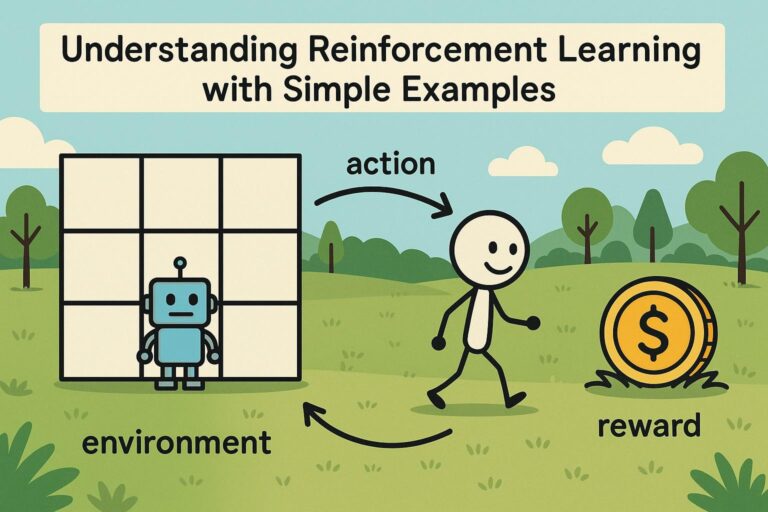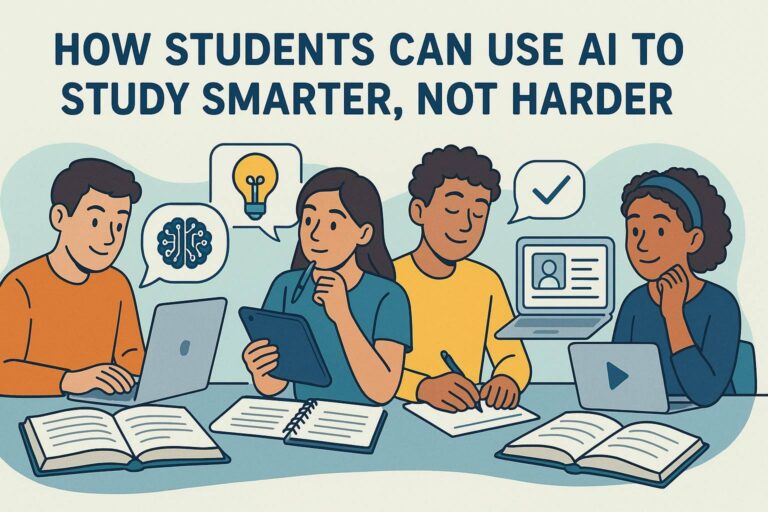
Deepfake technology has become one of the most intriguing and controversial advancements in artificial intelligence. From highly convincing celebrity face swaps on social media to fabricated speeches by public figures, deepfakes challenge our understanding of truth in the digital era. As synthetic media becomes more sophisticated, it is crucial to understand how this technology operates, the implications it carries, and the responsibilities that come with it.
This comprehensive guide explores the underlying mechanisms of deepfakes, their applications across industries, the ethical and security risks they pose, and the ongoing efforts to detect and regulate them.
What Is Deepfake Technology?
The term deepfake is a portmanteau of “deep learning” and “fake”, referring to AI-generated or manipulated content—typically videos, audio, or images—that convincingly mimics real people’s likenesses, voices, and movements. Unlike traditional editing tools that rely heavily on manual input, deepfakes are powered by advanced neural networks that automate the process and produce hyper-realistic results.
At its core, deepfake technology utilizes artificial intelligence, particularly Generative Adversarial Networks (GANs), to synthesize data that mimics real-world media. This process allows for the creation of fake video footage, audio recordings, and images that are nearly indistinguishable from authentic material.
How Does Deepfake Technology Work?
Deepfakes are generated through a series of steps that combine data acquisition, machine learning, and media refinement. Here’s a breakdown of how the process works:
1. Data Collection and Preprocessing
The first step in creating a deepfake involves collecting extensive media of the target subject—this includes photos, videos, voice recordings, and facial expressions. The quality, variety, and volume of the dataset greatly influence the realism of the final output.
Preprocessing prepares the data by aligning facial landmarks, cropping faces, correcting lighting variations, and ensuring consistency in size and angle. This helps the model better understand the subject’s visual features and expressions.
2. Training Using GANs
A Generative Adversarial Network (GAN) is a machine learning framework composed of two neural networks working against each other:
- Generator: Creates synthetic media based on training data.
- Discriminator: Evaluates the authenticity of the generated content and attempts to distinguish it from real data.
The two networks are trained simultaneously. Over time, the generator learns to produce increasingly convincing fakes that can fool the discriminator. When the discriminator is no longer able to detect the difference reliably, the training process is considered successful.
3. Face Replacement and Synthesis
The trained model can then be used to perform various tasks such as:
- Swapping one person’s face onto another’s body in a video.
- Generating facial expressions that match a specific audio track (lip-syncing).
- Creating entirely new images or videos from textual descriptions using diffusion models or transformer-based architectures.
Other deepfake methods include autoencoders for identity mapping and Recurrent Neural Networks (RNNs) for voice cloning and synchronization.
4. Post-Processing and Fine-Tuning
After generation, the content is refined with several techniques to enhance realism. These include:
- Color correction and blending
- Lighting adjustment and shadow alignment
- Noise reduction and resolution enhancement
- Motion smoothing for seamless video transitions
These steps help the synthetic media blend naturally with the background and surrounding elements, making detection more difficult.
Applications of Deepfake Technology
Although deepfakes are often associated with misinformation, they also offer valuable capabilities across numerous industries when used ethically and responsibly.
1. Film and Entertainment
Deepfake tools are used in film production for purposes such as:
- De-aging actors in movies
- Replacing actors in post-production without re-shooting scenes
- Reconstructing performances after an actor’s death
- Enhancing dubbing by matching lip movements to translated speech
This helps reduce production costs and improves the viewer experience with more believable effects.
2. Gaming and Virtual Reality
In gaming and immersive environments, deepfakes allow for:
- Realistic player avatars based on the user’s face
- Lifelike animations and character interactions
- Personalized virtual experiences and storytelling
Deep learning improves both the visual fidelity and the emotional realism of virtual characters.
3. Education and Training
Deepfakes are being used to create interactive, high-impact educational experiences such as:
- Historical figure reenactments for history classes
- Simulated patients in medical training environments
- Customized e-learning content with localized languages and avatars
These use cases enhance engagement and accessibility in remote and hybrid learning models.
4. Accessibility and Assistive Technology
Deepfake-based solutions can help individuals with disabilities through:
- Text-to-speech avatars for people with speech impairments
- Visual translation of speech into sign language
- Generation of visual narratives for low-literacy users
This brings inclusivity and communication support to underserved communities.
5. Advertising and Personalized Marketing
In the marketing domain, deepfakes enable:
- Hyper-personalized video campaigns with custom faces and voices
- Dynamic localization of promotional content in multiple languages
- Influencer-style promotions without physically filming actors repeatedly
This makes branding campaigns more scalable and targeted.
The Risks and Ethical Challenges of Deepfakes
As deepfake capabilities grow, so do the risks. Without appropriate controls, the technology can be weaponized to exploit, deceive, and manipulate audiences.
1. Disinformation and Political Manipulation
Deepfakes can be used to create convincing but entirely fabricated political speeches, interviews, or news clips. Such media can:
- Sway public opinion with false narratives
- Undermine democratic institutions
- Fuel election interference and geopolitical tension
This makes combating political disinformation a top priority.
2. Identity Theft and Biometric Spoofing
Deepfakes can mimic facial expressions and voices to:
- Trick facial recognition systems
- Bypass voice authentication protocols
- Commit financial fraud through impersonation
This has major implications for cybersecurity and identity protection.
3. Financial Scams and Social Engineering
Fraudsters use deepfake audio to impersonate executives or family members, convincing employees to wire money or share sensitive information. Known as CEO fraud, this attack vector is growing in prevalence and complexity.
4. Non-Consensual and Harmful Content
One of the most troubling uses of deepfake technology is the creation of synthetic explicit content featuring real people without their consent. This is particularly common in targeted harassment campaigns against women and public figures.
5. Loss of Trust in Digital Media
As deepfakes become indistinguishable from real content, audiences may begin to doubt all media—even truthful evidence. This leads to what’s known as the liar’s dividend, where people deny real events by claiming the content was manipulated.
Countermeasures and Detection Techniques
Researchers, developers, and governments are working to detect and prevent malicious deepfake usage through various strategies.
1. Deepfake Detection Algorithms
Machine learning models are trained to identify common artifacts in deepfakes, such as:
- Inconsistent blinking or eye movements
- Unnatural head turns or lip movements
- Visual mismatches in lighting, skin texture, or shadows
Detection software is being implemented by platforms like YouTube, Meta, and TikTok.
2. Blockchain-Based Media Authentication
Blockchain can be used to establish a verified chain of custody for media content. By cryptographically signing footage at the time of creation, it becomes possible to detect tampering or unauthorized alterations.
3. Digital Watermarking and Metadata
Watermarks and embedded metadata are used to trace the origin and editing history of content. This can assist platforms, journalists, and investigators in authenticating media.
4. Regulatory and Legal Frameworks
Several countries have proposed or enacted laws aimed at:
- Criminalizing the creation and distribution of malicious deepfakes
- Requiring disclosure of synthetic content in public communications
- Holding creators accountable for reputational or financial harm
Legal frameworks are critical to managing the ethical and societal impacts of synthetic media.
What the Future Holds for Deepfake Technology
Deepfake technology is evolving rapidly. In the near future, we may see:
- Real-time translation and lip-syncing in virtual meetings
- Personalized learning avatars in education
- AI-generated actors and voiceovers in mainstream media
- Tools for journalists and fact-checkers to authenticate media at scale
However, the potential for misuse will grow in parallel. Technological advancement must be matched with policy innovation, public awareness, and digital literacy to ensure deepfakes are used responsibly.
Final Thoughts
Deepfake technology sits at the intersection of innovation and controversy. It represents a powerful tool for creativity, education, accessibility, and personalization. But it also presents urgent challenges in the realms of misinformation, security, and consent.
Understanding how deepfakes work—and their far-reaching consequences—is essential in today’s digital ecosystem. Whether you are a technologist, business leader, educator, policymaker, or everyday user, staying informed and cautious is key to navigating this next chapter of media evolution.

I’m Shreyash Mhashilkar, an IT professional who loves building user-friendly, scalable digital solutions. Outside of coding, I enjoy researching new places, learning about different cultures, and exploring how technology shapes the way we live and travel. I share my experiences and discoveries to help others explore new places, cultures, and ideas with curiosity and enthusiasm.






